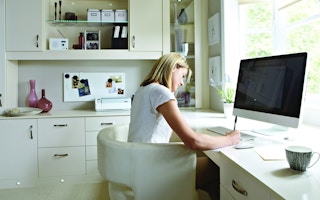With technology permeating everything that we do, it’s led to significant transformation in the workplace—specifically, how, where (and who) is working and what work employees do. The speed of change and disruption across industries has also caused greater uncertainty as many businesses rethink the way they harness their talent and real estate.
To continue reading, subscribe to Eco‑Business.
There's something for everyone. We offer a range of subscription plans.
- Access our stories and receive our Insights Weekly newsletter with the free EB Member plan.
- Unlock unlimited access to our content and archive with EB Circle.
- Publish your content with EB Premium.
For one, automation and artificial intelligence will change many job functions and render others irrelevant across different industries—particularly jobs and tasks that are manual or process driven. JLL research has found that as a result, the future workforce will be divided into three segments: core employees, freelancers and consultants, and jobs that are automated.
Core employees will be concentrated in smaller and fewer locations, ideally in central business districts with transportation and amenities concentrated nearby—reducing their energy and resource usage. This smaller core workforce could mean smaller office footprints requiring less energy from power and less waste generated.
In parallel, the emergence of the ‘liquid workforce’—freelancers, consultants and more—means potentially less commuting and perhaps a cleaner way of working. The need for flexibility to accommodate the uncertain operating environment and more project-based work could require more modular fit-outs and by extension, possibly less materials and waste in the building process.
Sustainability and smart buildings
We’ve already seen how many forward-thinking organisations have already adopted more efficient real estate management in the form of smart buildings and smart offices.
This is essentially powered by the Internet of Things to drive efficiency and real-time optimisation of building operations such as automatic monitoring and optimisation of air conditioning—of particular interest in Asia, where indoor as well as outdoor air quality is a perennial issue.
“
Healthy workplaces that make people feel good can help prevent attrition rates in a labour market where companies are battling to retain staff.
Some features of smart buildings and workplaces also herald a shift to a less paper-based workplace—from centralised ‘follow me’ printing (which means print jobs are sent to a centralised system and only released to their users upon activation for less wastage) to less storage in hot desk environments.
Companies are also embracing a more holistic view of sustainability. They’re thinking about more than cost-savings or maximising spaces to creating healthy, fulfilling, and productive environments for employees.
We now speak about healthy buildings instead of simply sustainable ones. In fact, the World Green Building Council now promotes the concept of healthy green buildings—buildings that are environmentally sensitive but also provide for the well-being of staff.
Recent JLL research on human experience reveals that sustainability and health are important to employees, and wellness facilities are rated as the workplace amenity most likely to drive higher workplace engagement.
For instance, biophilic design or buildings with more access to nature and greenery makes a significant difference to workers. A JLL survey done in conjunction with Tedx Sydney last year found that over 90 per cent of those surveyed felt more productive and creative with access to fresh air, indoor light and air quality and healthy food, fitness centres, and even mental health services.
Healthy workplaces that make people feel good can help prevent attrition rates in a labour market where companies are battling to retain staff.
Authorities and organisations are beginning to take this seriously. The Building and Construction Authority in Singapore, for one, has announced plans to work together with the Health Promotion Board to roll out a new Green Mark scheme in mid-2018 that aims to improve the health of occupants through office interior and wellness programmes.
Amid the changes to workspaces and work practices, a side benefit that comes up is these could ensure employees have both more time and access to other pursuits that boosts creativity, innovation and ensure a healthy balance in their life.
The drive towards a digitised workplaces and improved employee experience could just lead us to a healthier happier lives and a more sustainable future in real estate.
Susan Sutherland is the Head of APAC Corporate Research for JLL in Singapore. This article was written exclusively for Eco-Business.









